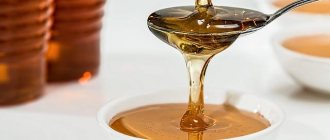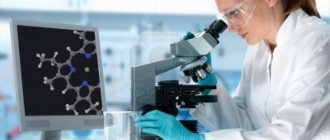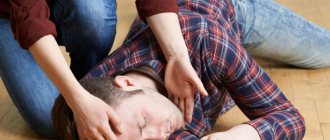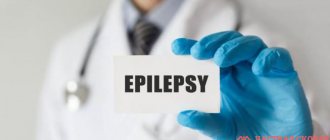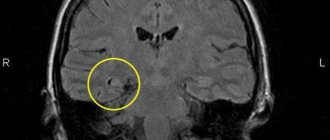What is epilepsy?
In fact, this disease has not even been fully studied; in regional hospitals, for more than half of patients with epilepsy, doctors cannot even tell the cause of the disease, and all treatment consists of pills that simply inhibit brain function, thereby reducing the number of seizures, and this does not always help and not everyone.
Meanwhile, the disease is based on 2 factors: inherited predisposition, environmental influences, and usually organic brain damage. In most cases, epilepsy is not only a self-sustaining, but also a progressive process, accompanied by impaired metabolism of brain tissue, hypoxia (oxygen starvation), and impaired blood supply to the brain. An attack, especially a convulsive one, is stressful for many body systems, especially the central nervous system.
Another unfavorable consequence of immune disorders in epilepsy is DIC (disseminated intravascular coagulation) syndrome, which not only leads to metabolic disorders in the brain, but also impairs the transport of antiepileptic drugs into the brain tissue. This syndrome occurs in 100% of patients with status epilepticus and in most patients with frequent seizures.
Modern treatment of epilepsy
Modern chemotherapy drugs used to treat epilepsy alleviate, but do not cure the disease; moreover, they damage the psyche. Epilepsy is treated for years, sometimes throughout life. If there are no seizures while taking anticonvulsants, they cannot be canceled abruptly, otherwise the seizures may recur with renewed vigor. In general, it is difficult to call this a treatment; in fact, it is simply a muffling of symptoms.
In general, the whole world has been successfully fighting this disease for a long time, but for us everything is still difficult! Yes, it seems that there are centers with modern equipment that are able to find the cause of the disease and treat exactly the cause, but it is difficult for an ordinary person to get there. So the person is left alone with his diagnosis and traditional methods and herbal medicine come in. Let's say right away that this is not entirely correct, herbal medicine is very good in this case as a supporting method of treatment, but not as the main one, although for many, unfortunately, this is the only method of treatment.
The use of herbal medicine in the treatment of epilepsy
The use of herbal medicine, that is, herbal treatment, makes it possible to influence all stages of the development of epilepsy, starting with the causes, and this can even be tonsillitis, sinusitis, pyelonephritis, inflammation of the genital organs, which contribute to increased pressure inside the skull, a general deterioration of the condition and, as a consequence, excitability of the brain . On the other hand, long-term use of anticonvulsants disrupts the functioning of all internal organs (pancreas, liver, stomach, intestines, kidneys, hematopoietic system), which aggravates the severity of epilepsy. It turns out to be a vicious circle.
Herbal medicine allows you to break this vicious circle. Using sedative and anticonvulsant herbs, we influence all stages of its development, using the antimicrobial, antiviral, antiparasitic, anti-inflammatory, adaptogenic, antiallergic, immunostimulating, detoxifying effects of plants.
Herbs normalize the functioning of the pancreas, kidneys, cardiovascular system, liver, regulating blood pressure, eliminating diarrhea and constipation, dysbacteriosis, normalizing the mental state and functionality of the gastrointestinal tract of patients, eliminating depression, improving sleep.
The inclusion of diuretic herbs allows you to reduce intracranial arterial pressure, while there is no need to take potassium supplements, since it is contained in many herbs. Plants with antidepressant effects can not only improve mood and relieve anxiety and fears, but also improve the processes of adaptation (adaptation) of the body to the environment, reducing the destructive effect of stress, improving overall well-being, increasing vitality, reducing the severity and frequency of attacks. The use of herbal medicine leads to the disappearance of patients' resistance to the action of anticonvulsants, increasing the effectiveness of anticonvulsant therapy and reducing its toxic effects. This allows you to reduce the doses of these drugs over time and even stop them altogether, doing this slowly and gradually against the backdrop of continuous and long-term use of herbs, even in the absence of attacks.
The feasibility of treating epilepsy with herbal medicine
Although we are against herbal medicine being the main method of treating epilepsy, it is still worth noting that there are plenty of examples of herbal cures for this disease in the world. Herbal medicine should be used as a supportive method, and treatment should be carried out by professionals, especially in cases where attacks recur more than once every six months. And remember, in order to defeat epilepsy, you need a general healthy state of the body, and this can at least be achieved through physical exercise, fresh air and proper nutrition.
It is important to remember that herbal medicine is a whole science and you should not neglect it, especially when treating serious diseases. We recommend that you read the material: Why doesn’t herbal medicine help?
Alternative methods in the treatment of epilepsy
Publication date: April 21, 2021. Category: News and announcements.
At least 5% of the world's population has suffered an epileptic attack at least once in their life. Today, in the Shuryshkarsky district, 57 people suffering from the disease “Epilepsy” are registered with a neurologist at the dispensary.
Among these people, including 15 children. Some of them will be able to “outgrow” this disorder, but most will be forced to fight the disease throughout their lives. Every patient with epilepsy knows how important it is to observe some restrictive measures in their daily actions, so as not to harm themselves, wittingly or unwittingly. The same applies to strict control over the intake of antiepileptic drugs. BUT! Even correctly selected therapy, in at least 30% of cases, does not provide complete cessation of epileptic seizures. In this regard, alternative approaches to the treatment of epilepsy are relevant today throughout the world.
Phytotherapy.
Medicines based on medicinal plants are used, as a rule, as part of complex treatment (addition to antiepileptic drugs). A number of medicinal plants: chamomile, passionflower, valerian, due to their calming effect, can help increase the effectiveness of basic therapy. According to some reports, St. John's wort extract also helps reduce the frequency of seizures in epilepsy. However, when using medicinal plants, you should be careful and consult a doctor.
Fighting hypovitaminosis.
Vitamin B6 deficiency may contribute to the development of seizures. As part of the complex treatment of epilepsy, multivitamins containing vitamin B6, vitamin E, magnesium, and folic acid are often used. Long-term use of anticonvulsants, in itself, can contribute to a decrease in the blood plasma levels of various vitamins, including vitamins D and E.
Diet therapy: ketogenic diet.
The ketogenic diet is low in carbohydrates, high in fat and moderate in protein. Consumption of such food promotes the production of ketones, an increased level of which leads to a decrease in the frequency of epileptic seizures. The keto diet shows optimal results when used in children and young people with severe epilepsy. 50% of patients following a keto diet experience a decrease in the number of epileptic attacks, and the effect remains even when switching to a standard diet. The classic ketogenic diet is unbalanced. It contains very small portions of fresh fruits and vegetables, grains and calcium-rich foods. In addition to the keto diet, it is recommended to introduce vitamins B, calcium, and vitamin D into the diet as part of multivitamins.
Atkins diet.
The Atkins diet features high-protein and low-carbohydrate foods. The most common side effect of this diet is constipation, which is associated with a decrease in fluid volume in the body. The Atkins diet allows meat, including pork and beef, as well as fatty fish, seafood, eggs, full-fat dairy products, nuts, and olive oil. Prohibited foods include sugar, including in drinks, cakes, sweets, wheat and rice, low-fat foods and legumes. People following the Atkins diet are contraindicated in fruits and vegetables high in carbohydrates - bananas, apples, grapes, carrots.
Relaxation technique.
It is known that stress and anxiety increase seizure activity, so a number of alternative techniques in the treatment of epilepsy are aimed at improving the emotional state. There are many practices that help you relax, calm down, and normalize sleep. One of the popular techniques is yoga, based on breathing exercises and the use of various methods of meditation.
Other alternative methods.
Some studies have shown the effectiveness of correcting epilepsy using hypnosis in combination with aromatherapy. One third of the 100 participants in this study were seizure-free at 12 months. The experiment was quite labor-intensive, since it is necessary to take into account that some essential oils can provoke seizures, for example, eucalyptus, lavender, and rosemary oils. Another popular method is acupuncture. Acupuncture does not reduce the number of attacks, but it does help the patient feel better.
In any case, do not forget that folk remedies are not a method of treatment. Treatment is prescribed only by the attending physician!
Neurologist, MCRB Kholgova Irina Vladimirovna
Herbs for epilepsy
In fact, there are several dozen herbs for epilepsy, but we will talk about the most popular and frequently found in the literature.
blue cyanosis
Blueberry grass is the main plant in folk medicine that is used to fight epilepsy. The flowers are quite unpretentious and can be grown in the garden as a beautiful ornamental plant, and, if necessary, cut and used as an anticonvulsant and sedative. Blueberry is grown from seeds.
Common wormwood
The herb wormwood (chernobyl) is also popular and is used in sedative and anticonvulsant preparations; you can read more about its properties here.
Oregano and St. John's wort
Tea made from a mixture of oregano herb and St. John's wort herb can give a good effect in the fight against epilepsy; these plants can also be taken separately, but the effectiveness will decrease. And another advantage of this tea is that you can drink it as an everyday drink without getting used to it, and the pleasant taste of such tea leaves will help you drink it not as a medicine, but as a tasty and healthy drink. More information about these herbs can be found in our articles: St. John's wort, oregano.
Spiraea
Flower tea made from meadowsweet flowers is a mild anticonvulsant and is a good disease prevention if seizures have not occurred for a long time. Since epilepsy is a disease that can subside and manifest itself after a few years when a person stops taking anticonvulsants, meadowsweet will be an excellent preventive measure after stopping treatment. It is very aromatic and tasty, it is not addictive, so meadowsweet flower tea can be drunk as an everyday drink.
Maryannik
The herb maryanika, another name Ivan-da-marya, is very popular in folk medicine, although its effectiveness in the treatment of epilepsy has not yet been scientifically proven and this popularity was formed even before the advent of the Internet.
Folk beliefs and rituals
Signs of an epileptic attack have been known since ancient times. Their beginning was described and known by the ancient Greeks and Romans, who explained epilepsy by divine intervention. In those days, this disease was called “Hercules” or “divine.”
In the Middle Ages, the tradition continued, but acquired a church interpretation.
The disease was designated as “sacred” or “demonic disease” . This approach led to the fact that epileptics were shunned and avoided so as not to “get infected.” An even more radical treatment for epilepsy was surgery or, more precisely, craniotomy in order to release the “evil spirit.”
Also, conspiracies and rituals .
The patient was covered with a cloth during a seizure and prayers were read. There was a tradition of taking water from 3 different sources and, after ritual mixing, washing the patient with it.
We can give many more examples and treatment methods that this disease has survived over many centuries of human development, but today the “black disease” is curable in 70% of cases.




